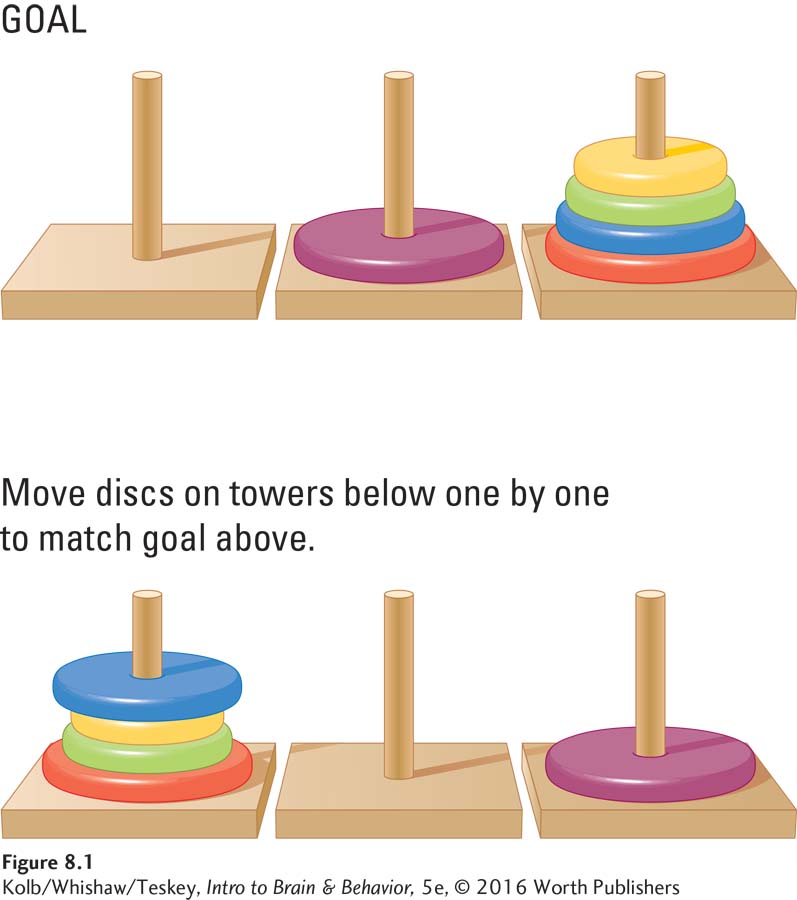8-1 Three Perspectives on Brain Development
Brain and behavior develop apace, and scientists thus reason that the two are closely linked. Events that alter behavioral development should similarly alter the brain’s structural development and vice versa. As the brain develops, neurons become more and more intricately connected, and these increasingly complex interconnections underlie increasingly complex behaviors. These observations enable neuroscientists to study the relation between brain and behavioral development from three perspectives:
Structural development can be correlated with emerging behaviors.
Behavioral development can be predicted by the underlying circuitry that must be emerging.
Research can focus on factors such as language, injury, or socioeconomic status (SES) that influence both brain structure and behavioral development.
Correlating Emerging Brain Structures with Emerging Behaviors
We can look at the nervous system’s structural development and correlate it with the emergence of specific behaviors. For example, the development of certain brain structures links to the motor development of, say, grasping or crawling in infants. As brain structures mature, their functions emerge and develop, as manifested in behaviors we can observe.
Neural structures that develop quickly—
The Tower of Hanoi test, illustrated in Figure 8-1, shows how planning skills can be measured in the laboratory. The task is to plan how to move colored discs one by one, in the minimum number of moves, from one configuration to another. Most 10-

Mature adults with acquired frontal lobe injuries also fail to perform well on the Tower of Hanoi test. Such evidence reinforces the idea that children are not miniature adults who simply need to learn the “rules” of adult behavior. A child’s brain is vastly different from an adult’s, and the brains of children at different ages are not really comparable either.
Correlating Emerging Behaviors with Neural Maturation
We can turn our observational sequence around and scrutinize behavior for the emergence of new abilities, then, inferring underlying neural maturation. For example, as language emerges in the young child, we expect to find corresponding changes in neural structures that control language. In fact, neuroscientists do find such changes.
At birth, children do not speak, and even extensive training would not enable them to do so. The neural structures that control speech are not yet ready. Thus, as language emerges, the speech-
The same reasoning can be applied to frontal lobe development. As frontal lobe structures mature through adolescence and into early adulthood, we look for related changes in behavior. We can also do the reverse: because we observe new abilities emerging in the teenage years and even later, we infer that they must be controlled by late-
Identifying Influences on Brain and Behavior
The third approach to developmental interrelations between brain and behavior is to identify and study factors that influence both. From this perspective, the mere emergence of a fully developed brain structure is not enough. We must also know the events that shape how that structure functions and produces behaviors. Some events that influence brain function are sensory experience, injuries, and the actions of hormones and genes.
Logically, if one factor influences behavior, then the brain structures changed by that factor are those responsible for the behavioral outcomes. For example, we might study how the abnormal secretion of a hormone affects both a certain brain structure and a certain behavior. We can then infer that because the observed behavioral abnormality results from the abnormally functioning brain structure, the structure must typically play some role in controlling the behavior.
8-1 REVIEW
Three Perspectives on Brain Development
Before you continue, check your understanding.
Question 1
Structural brain development is correlated with the emergence of __________.
Question 2
Behavioral development predicts the maturation of _______.
Question 3
Three factors that influence brain function are __________, __________, and __________.
Question 4
What important constraint determines when behaviors emerge?
Answers appear in the Self Test section of the book.